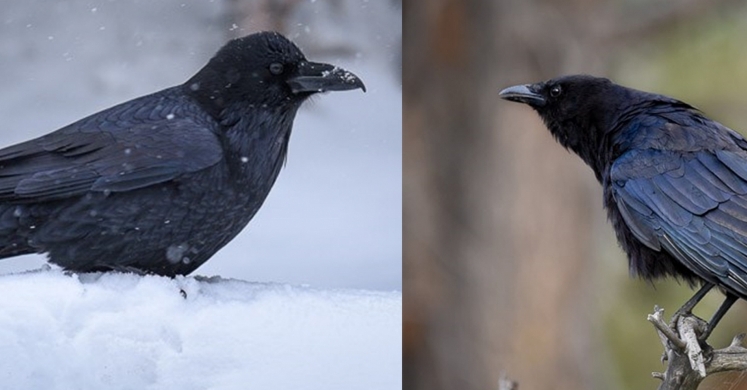Blog

#bioPGH Blog: Ravens and Crows: The Birds with the Brains
 A resource of Biophilia: Pittsburgh, #bioPGH is a weekly blog and social media series that aims to encourage both children and adults to reconnect with nature and enjoy what each of our distinctive seasons has to offer.
A resource of Biophilia: Pittsburgh, #bioPGH is a weekly blog and social media series that aims to encourage both children and adults to reconnect with nature and enjoy what each of our distinctive seasons has to offer.
As October continues, the days grow cooler and the evenings get spookier! This time of year, the poetic darkness of crows and ravens catches our attention for decorations themes and eerie sound bites. Yet these beauties are more than just an image for the front door on Halloween! With intelligence that rivals the smartest of known animals, crows and ravens are a couple fascinating species, and what better time of year to learn more about them?
Both ravens and crows are in the family Corvidae, along with other familiar birds such as magpies and blue jays. The two birds do have many distinctions, but they can be subtle if you are unfamiliar with them. First, ravens (left in the above image) are quite a bit larger than crows (right in the above image). Their wingspans can be up to 47 inches across, and they use those wings fly on warm lifts of air like hawks. This means if you see a bird in the distance that initially appears to be soaring like a bird of prey, but upon closer inspection, it turns out to be all-black (yet not a vulture), it probably was a raven. Crows, on the other hand, are still large birds, but their wingspans tend to “only” range up to just over three feet across. Another physical trait that is relatively easy to spot is the shape of their tails. Crows tail feathers are all the same length as each other, giving them tail a flat fan shape. Raven tail feathers, on the other hand, are longer in the middle of the tail than on the sides, making a triangle point out of the tail (see below.)

Approximate silhouette of raven tail (left) and crow tail (right).
Crows and ravens can also be distinguished by their calls. The classic “caw-caw” vocalization is a crow, along with a few other sounds. Raven calls, on the other hand, are a bit more of a gurgling grunt or a “croak.” Or, as many a bird-watcher and poet has noted, if the bird says “nevermore,” it’s definitely a raven.
Whether crow or raven, though, they are highly intelligent birds. Both species have proven themselves masters at solving puzzle boxes, they can use tools, and they can even judge fairness and remember when they have been wronged. Incredibly, crows have even learned how to pedestrian crosswalks to their advantage when preparing dinner!
Crows and ravens are also master problem solvers. In one study, crows showed themselves able to live out the classic Aesop fable and use water displacement to acquire a treat. Ravens have also proven to be adept and completing a complete a series of complex tasks to reach food. Sometimes, you have to see the birds at work to believe it:
I’m sure you will hear and see many crows, and perhaps some ravens, throughout the rest of this season, but now, we can remember how well they can solve a complex trick when they want a treat!
Connecting to the Outdoors Tip: For the last few late autumns, the Schenley Park area at dusk has been an incredible spot to view huge numbers of crows coming together to roost for the night. If you are around Oakland, and are interested in seeing literally thousands of crows flying overhead, head to one of the bridges near Schenley. You will be able to very easily spot the flock! Also, fish crows have been to hang out around Duck Hollow by Homestead! To the casual observer, they are almost indistinguishable from the American crow, but their calls have a much more nasal sound.
Continue the Conversation: Share your nature discoveries with our community by posting to Twitter and Instagram with hashtag #bioPGH, and R.S.V.P. to attend our next Biophilia: Pittsburgh meeting.
Resources
Audubon Society: How to Tell a Raven from a Crow
National Geographic: Why Ravens and Crows Are Earth’s Smartest Birds
Scientific American: Crows Understand Analogies
Photo Credit: National Park Service, public domain; Pexels CC0

